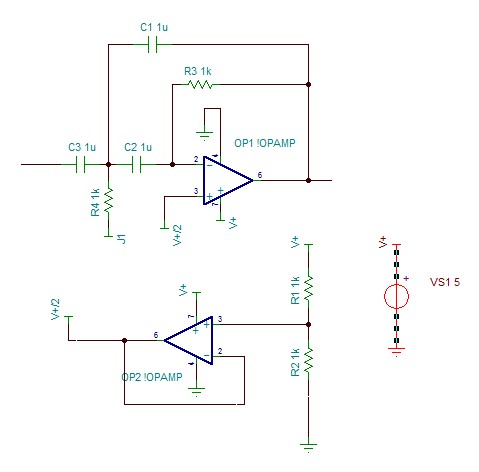Sink0
Full Member level 6
- Joined
- Nov 25, 2009
- Messages
- 390
- Helped
- 37
- Reputation
- 74
- Reaction score
- 30
- Trophy points
- 1,308
- Location
- Sao Paulo, Brazil
- Activity points
- 4,186
I am working on a EMG amp project so i need to use a few filters to get a quality signal at my output. I am have been discussing with Texas Instruments about the proper way to design a second order filter when your virtual reference is at the middle of toyr supply (link to TI forum). On my design i will be using a INA333 with 3.3V supply and creating a center reference with 2 precision resistors and a voltage follower. Considering a 2nd order butterwoth MFB high-pass filter as an example. As the 1.65V reference is my filter reference it is suposed to be used the GND on a standerd bipolar supply design. But if you take a look at the filter used and posted at the Texas Instruments forum discussion it is being used the real GND at some points. They are telling me that thats the best solutions as i will need a low-impedance supply that is able to drain current. But does that really makes sense? Becouse for sure the transfer function will be different.
Any comment on that? Thank you!
Sorry if i was not clear enough!
Any comment on that? Thank you!
Sorry if i was not clear enough!
